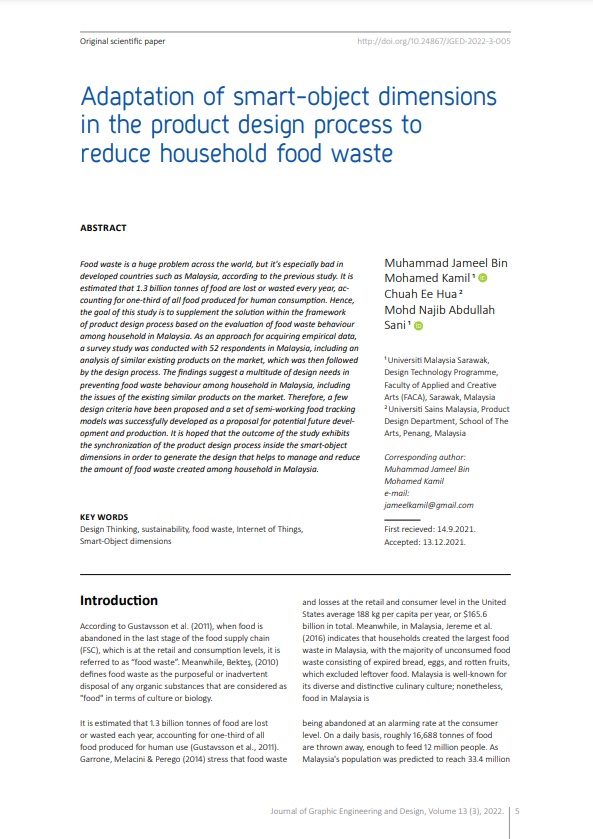Adaptation of smart-object dimensions in the product design process to reduce household food waste

Published 2022-09-01
abstract views: 401 // Full text article (PDF): 284
Keywords
- Design Thinking,
- sustainability,
- food waste,
- Internet of Things,
- Smart-Object dimensions
How to Cite
Copyright (c) 2022 © 2022 Authors. Published by the University of Novi Sad, Faculty of Technical Sciences, Department of Graphic Engineering and Design. This article is an open access article distributed under the terms and conditions of the Creative Commons Attribution license 3.0 Serbia.

This work is licensed under a Creative Commons Attribution 3.0 Unported License.
Abstract
Food waste is a huge problem across the world, but it's especially bad in developed countries such as Malaysia, according to the previous study. It is estimated that 1.3 billion tonnes of food are lost or wasted every year, accounting for one-third of all food produced for human consumption. Hence, the goal of this study is to supplement the solution within the framework of product design process based on the evaluation of food waste behaviour among household in Malaysia. As an approach for acquiring empirical data, a survey study was conducted with 52 respondents in Malaysia, including an analysis of similar existing products on the market, which was then followed by the design process. The findings suggest a multitude of design needs in preventing food waste behaviour among household in Malaysia, including the issues of the existing similar products on the market. Therefore, a few design criteria have been proposed and a set of semi-working food tracking models was successfully developed as a proposal for potential future development and production. It is hoped that the outcome of the study exhibits the synchronization of the product design process inside the smart-object dimensions in order to generate the design that helps to manage and reduce the amount of food waste created among household in Malaysia.
Article history: Received (September 14, 2021); Revised (December 6, 2021); Accepted (December 13, 2021); Published online (September 1, 2022)

